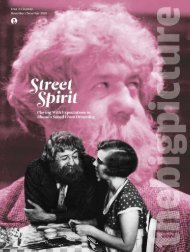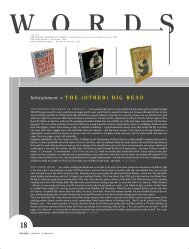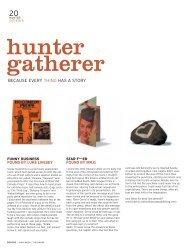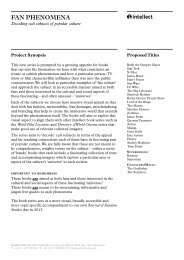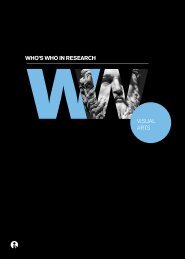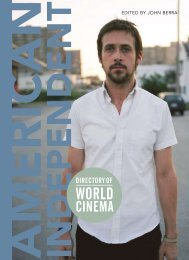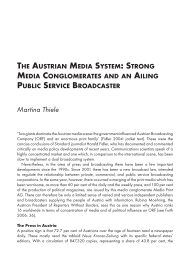Anthem - Intellect
Anthem - Intellect
Anthem - Intellect
Create successful ePaper yourself
Turn your PDF publications into a flip-book with our unique Google optimized e-Paper software.
Signifying Europe<br />
soothes their nerves. They may of course also have a nice picture on the wall, but<br />
lifting eyes to really look at it demands a break from desk work that is not in the same<br />
way required, at least on a subliminal level, to enjoy music while working.<br />
These traits also combine to make music particularly suitable for collective<br />
interaction, to a higher extent than most other modes of communication, except<br />
possibly for dance (with which it is as a rule fused, as silent dancing is a rarity). Music<br />
lends itself to be made collectively not only for but also by groups, in heterophonic<br />
or polyphonic modes of communal expression, while for instance images or words<br />
tend to demand exclusive momentary concentration and thus function in a more<br />
monologic or dialogic way.<br />
Visual symbols are typically integrated in lots of settings, both solemn and vernacular.<br />
Flags can be sighted all year round, and logos may appear on car number plates as<br />
well as on printed and electronic documents, for instance. <strong>Anthem</strong>s are drastically<br />
different. Few people hum them several times a day: instead they are brought forward<br />
on festive occasions. They are less ‘banal’ or ‘unwaved’ in Michael Billig’s sense. Other<br />
kinds of music may well be heard in the background, as soundtracks to everyday life,<br />
but anthems have too strong a symbolic force to lend themselves to such banalisation.<br />
Being actively performed at distinct ceremonial events, they are often the focus<br />
of attention, performing a kind of sacralising function of consolidating a kind of<br />
communion. Benedict Anderson has talked of ‘a special kind of contemporaneous<br />
community’ suggested by poetry and songs, for instance national anthems as sung on<br />
national holidays, when they give rise to ‘an experience of simultaneity’, an image of<br />
‘unisonance’ and a ‘physical realization of the imagined community’, as ‘people wholly<br />
unknown to each other utter the same verses to the same melody’, connected by nothing<br />
but ‘imagined sound’. 339 Among the main symbols discussed so far, one may argue that<br />
the flag is the most integrated and vernacular one, followed by the motto, then the<br />
anthem, with the day at the other extreme, as the whole point with Europe Day is to<br />
be a unique annual event supposed to be consciously celebrated, even though it may<br />
in this respect largely be seen as a failure so far. While a motto can be hinted at often<br />
in political discourses, and a logo may be integrated in a large number of settings, an<br />
anthem is more apt to be used on special occasions, when there is cause for a common<br />
celebration of shared matters, for instance on national holidays. In Klaus Bruhn Jensen’s<br />
terms, anthems belong to ritualised ‘time-out culture’, while flags can also take part in<br />
the ‘time-in culture’ that is an integrated part of ordinary everyday life. 340<br />
Music thus has a strong potential for both collectively constituted and emotionally<br />
charged expression. Being a piece of music, the European anthem has the characteristic<br />
capacities for emotionally involving and bodily anchored community building, but<br />
these capacities are typically confined to ceremonial events rather than integrated in<br />
everyday life.<br />
152



